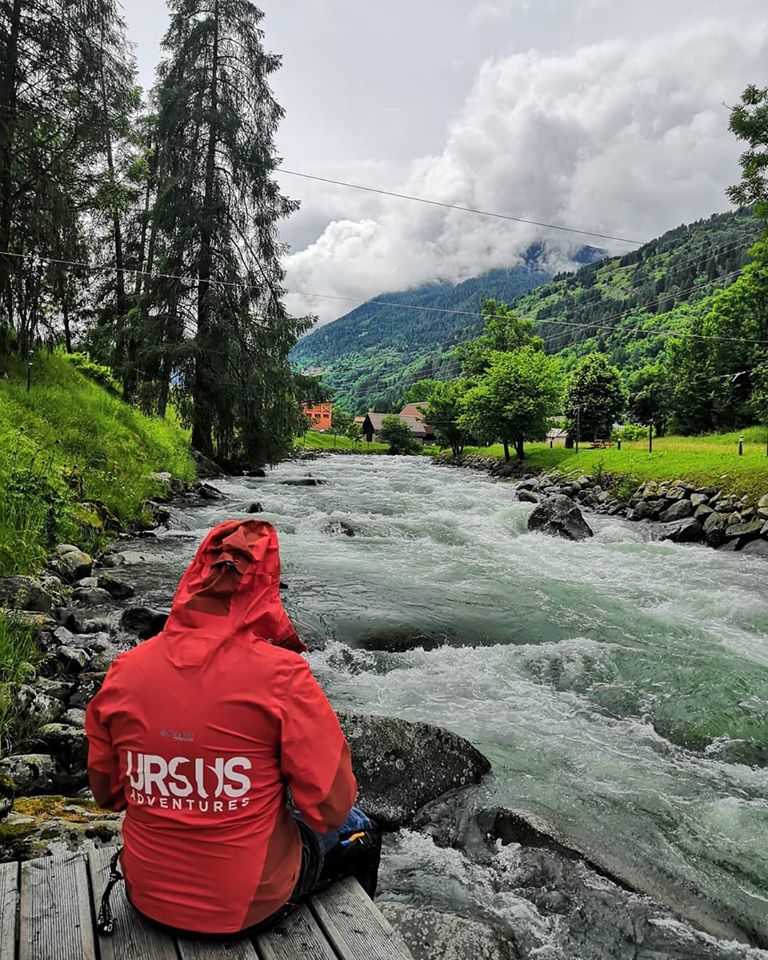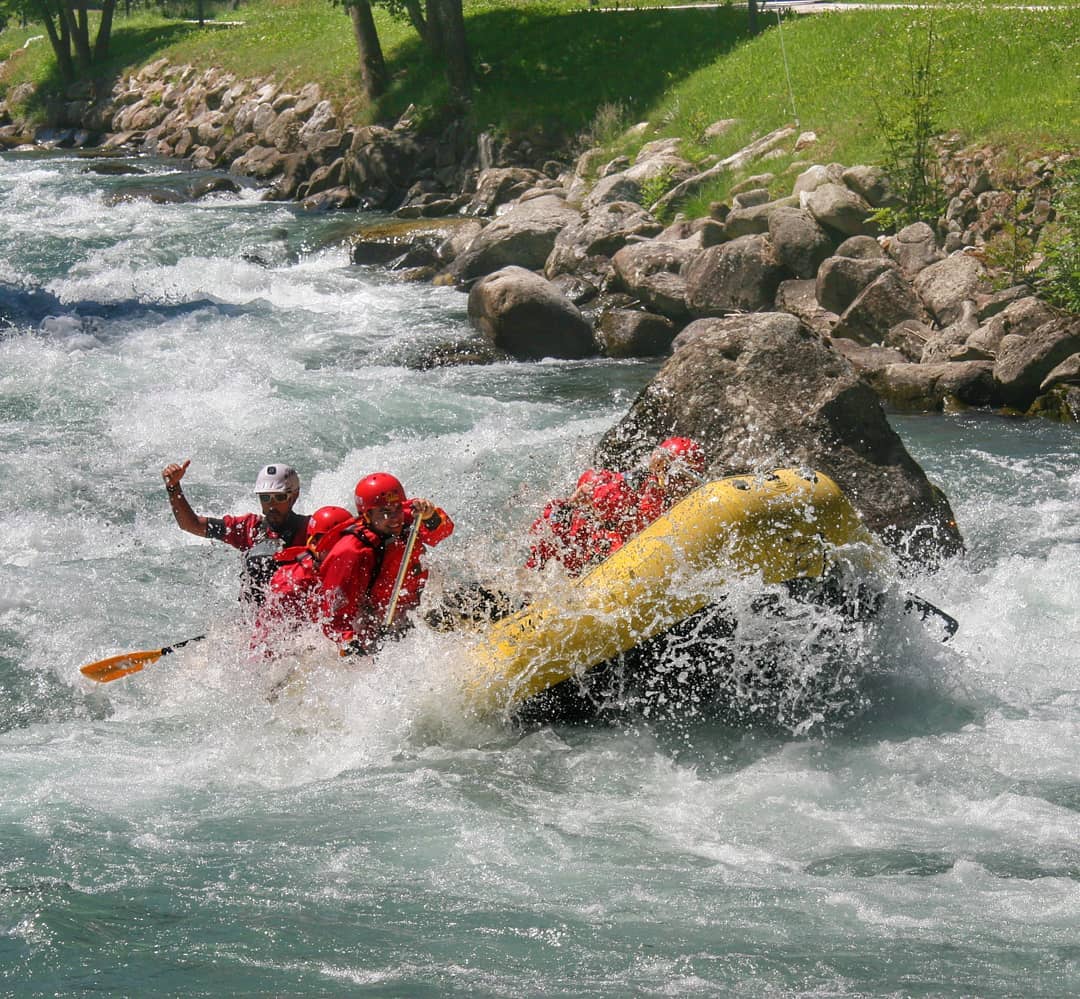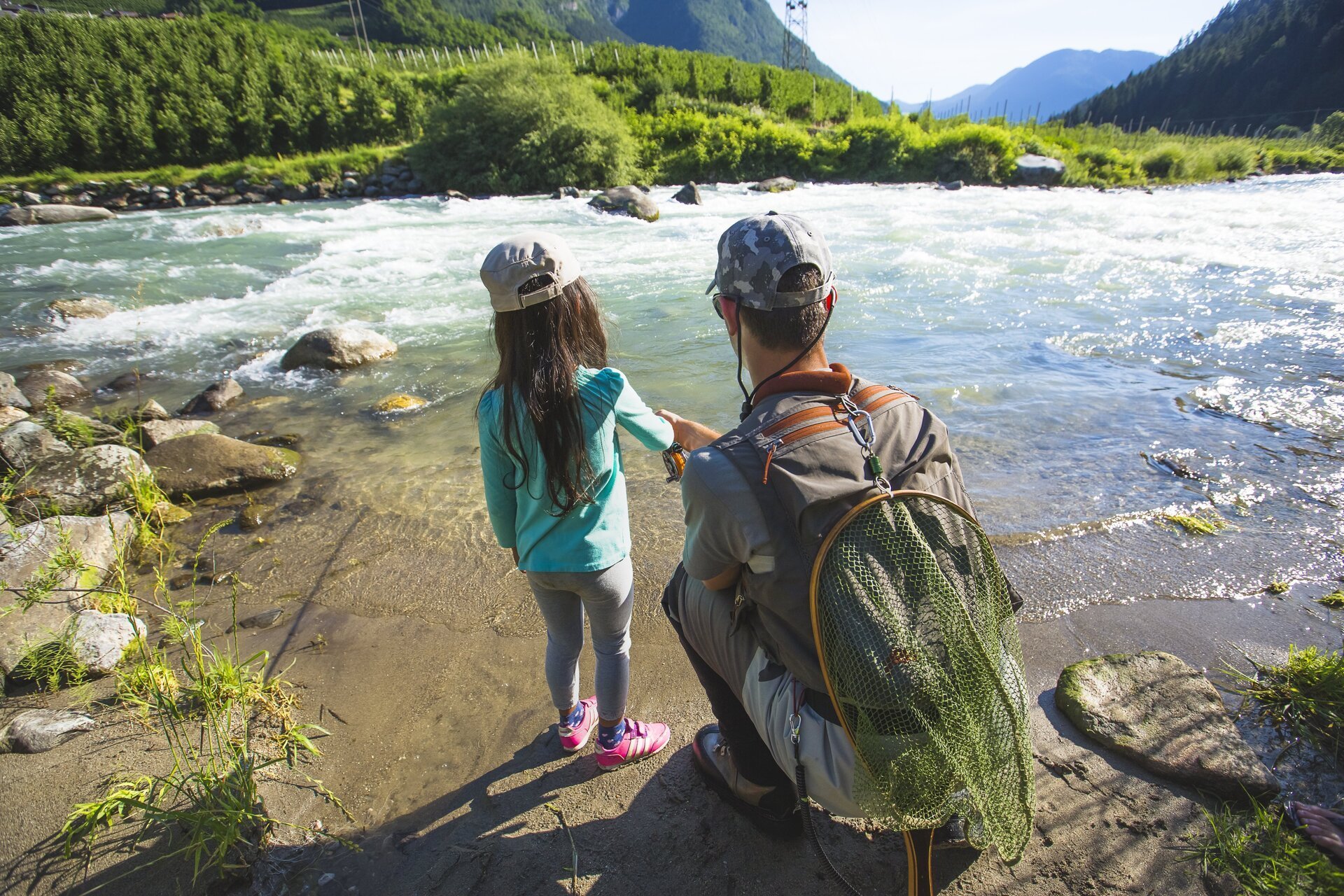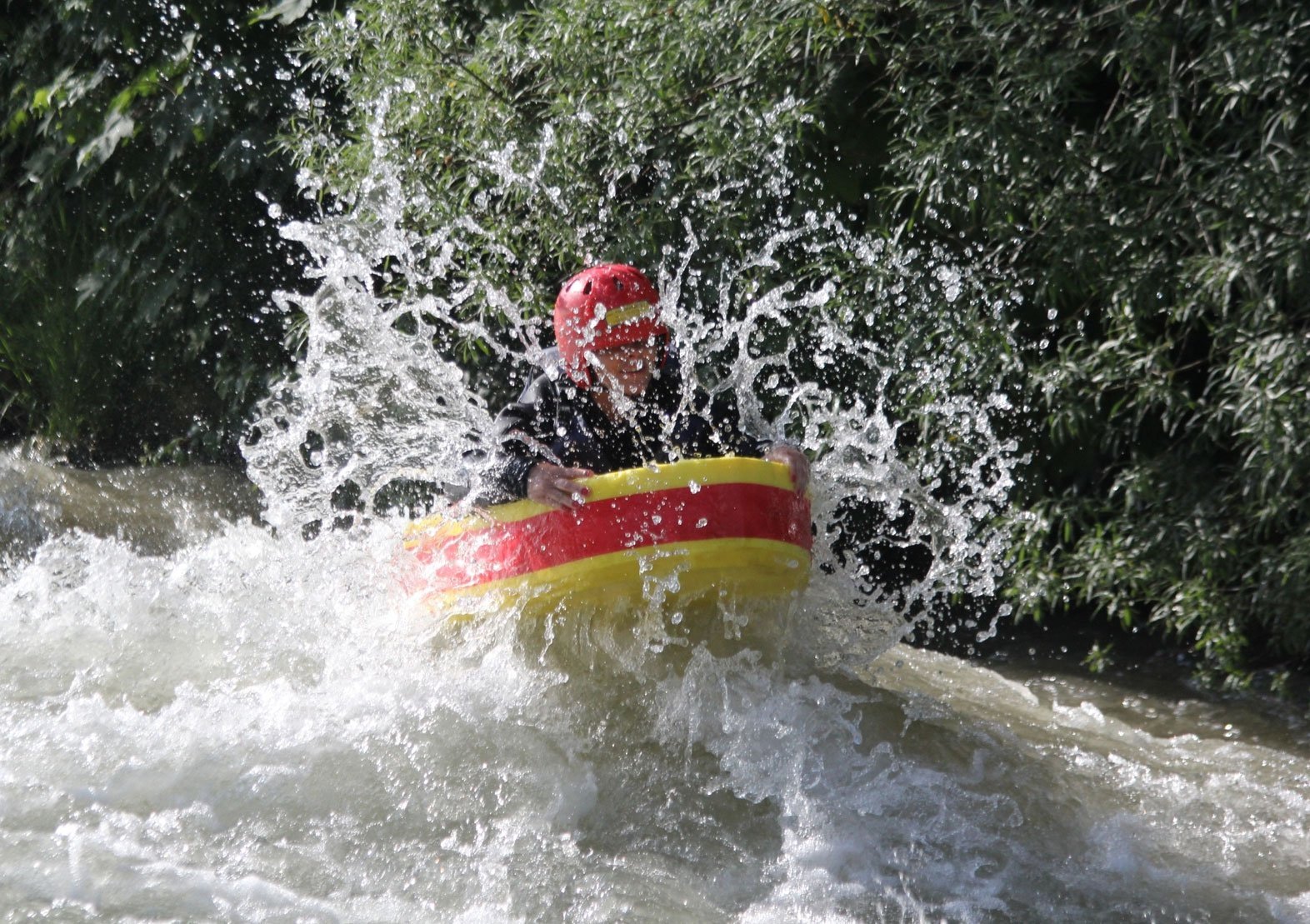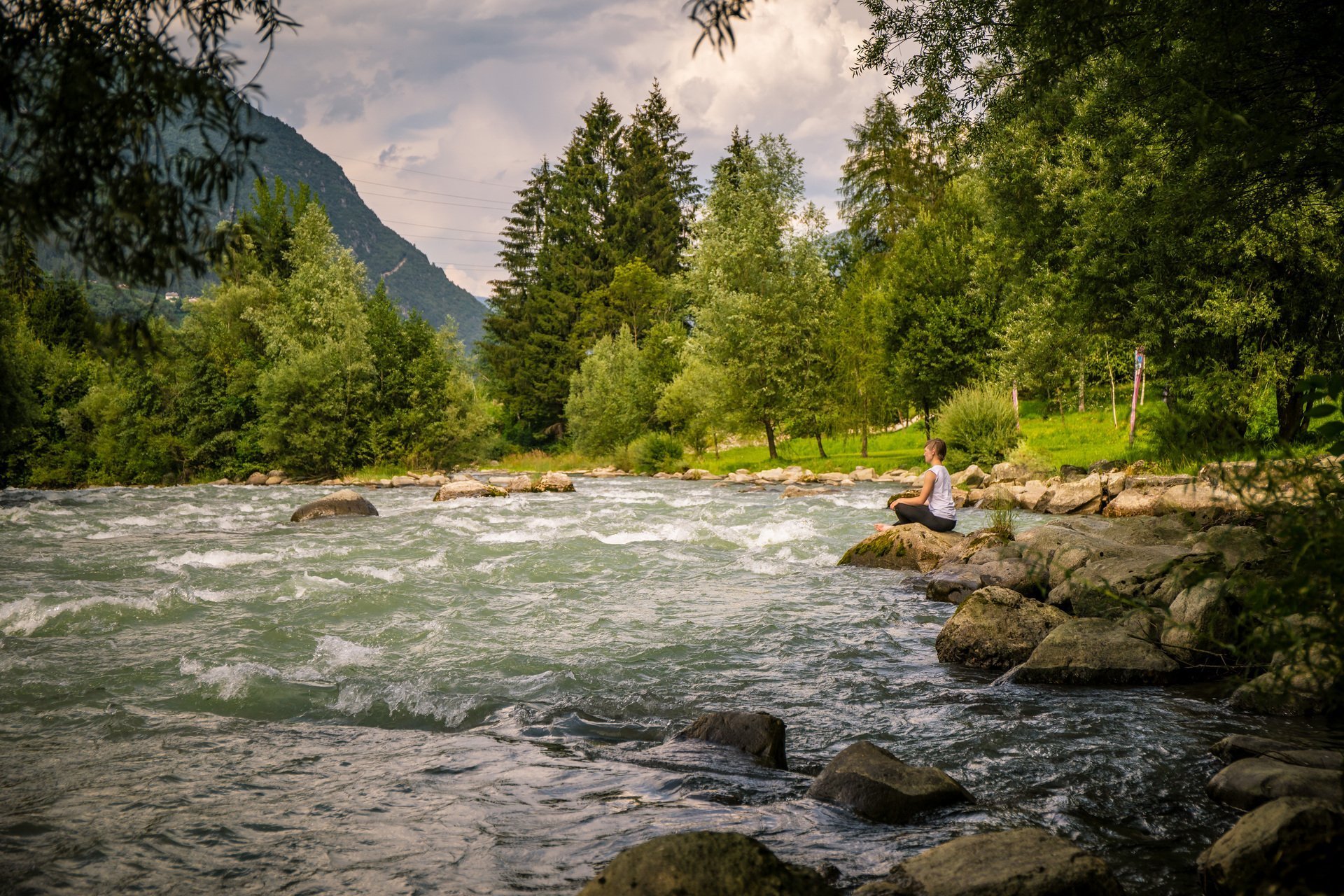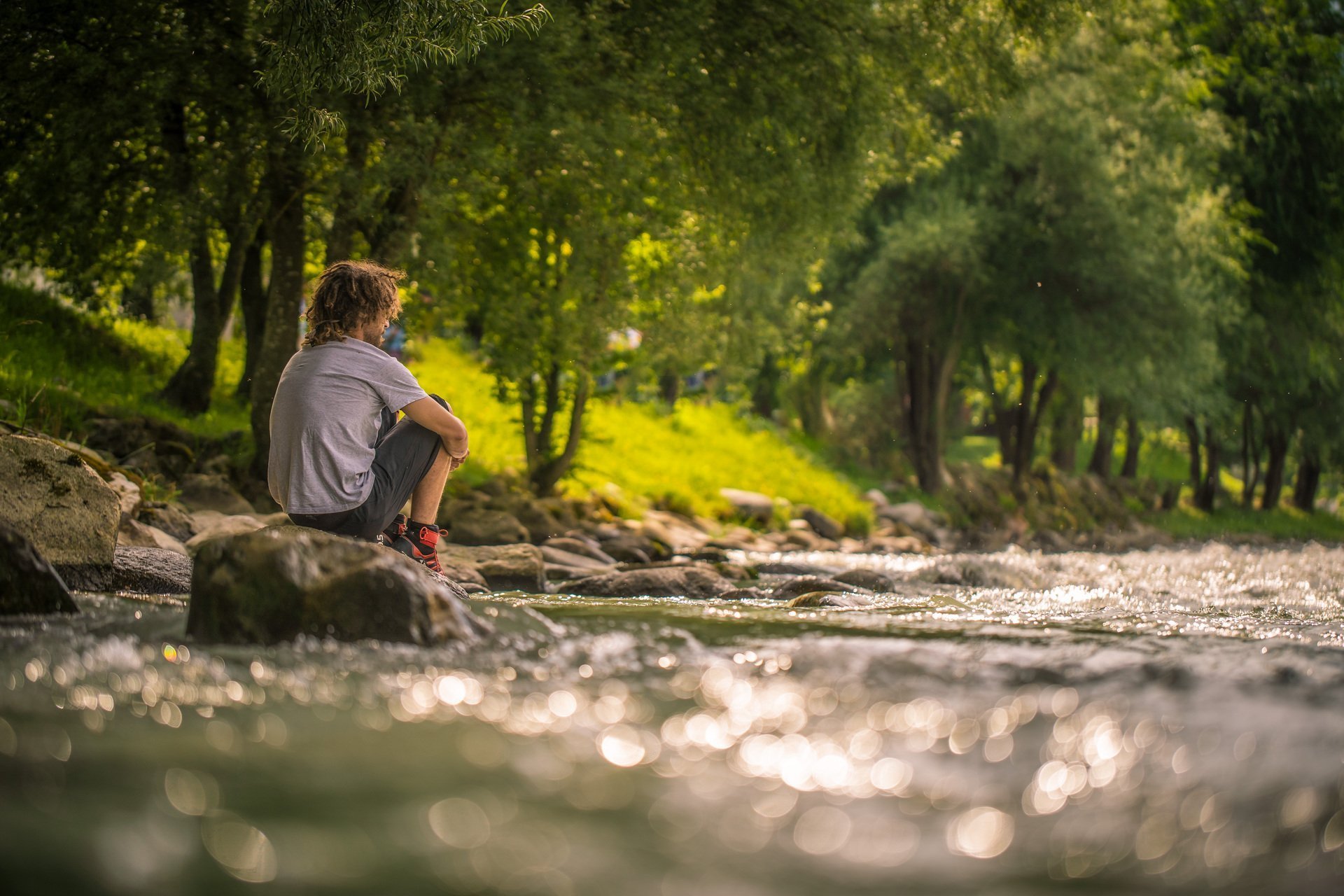Discover the Noce river
The Noce river has its source at an altitude of 3,360 meters from the Corno dei Tre Signori in Alta Val di Pejo. In its very first section, however, it is not a single river, but is divided into two branches: the Noce Nero, which descends from the Corno dei Tre Signori, collects the waters of numerous
springs and temporarily stops its descent into the artificial lake of Pian Palù, and the Noce Bianco, which instead descends from the slopes of Cevedale, swollen by all the water collected in the wild Val de la Mare. These two branches merge at Cogolo to give life to the real Noce.
At the height of Cusiano where the Ursus Adventures Rafting Center is located, the Noce merges with the waters of the Vermigliana stream that descends from Passo del Tonale collecting all the waters that descend from Presanella, the highest peak in the Trentino area.
The river acquires more and more strength and vigor, calling to itself the waters of the other two major tributaries in Val di Sole: the Meledrio near Dimaro and the tumultuous Rabbies a little further downstream from Malé.
About 10 kilometers further downstream from the town of Malé, the Noce creates a deep ravine through which it will flow into the artificial basin of Santa Giustina, inaugurated in 1951 as the highest dam in Europe thanks to its barrier wall of 152 meters.
It then continues its journey along the Val di Non, creating spectacular wetlands, and flowing into the Adige Valley, where it ends its journey by joining the Adige River at the height of the town of Zambana, after a journey of 105 kilometres.
Along its course the Noce creates numerous areas of high naturalistic importance: in Val di Sole we find three local reserves (Mezzana, Piano and Malé) and a special conservation area (Ontaneta di Croviana). In Val di Non, on the other hand, emerging from the Santa Giustina dam, the Noce forms the spectacular nature reserve of the Forra di Santa Giustina and, before flowing into the Val d’Adige, that of the Rocchetta.
River sports on the Noce river
The Noce river is among the most important river sports courses in Italy, both for its difficulties and for the length of the navigable stretches and for the incredible landscapes that surround it. There are numerous activities related to this river: rafting, pesca, hydrospeed, tarzaning and bicycle with which you can ride along this stream along the cycle path.
But the most famous sport is certainly rafting, or an adventure aboard a floating dinghy, navigating the river with a paddle. And why is it a truly unique experience?
Because National Geographic has included the Noce among the top 10 rivers in the world for the practice of river sports, and this stream is the only one in Europe present in this special ranking!
Rafting is an activity suitable for everyone: for families preferring undemanding stretches of the river, but it is also an ideal destination for the more experienced, who will be able to find something for their teeth by challenging the icy waters of this watercourse . The Noce is a river of history, landscapes and biodiversity: the Alto Noce River Park ensures the management of the protected areas and its river and tributary areas.
The Upper Noce River Park
The Noce is a river of history, landscapes and biodiversity: the Alto Noce River Park ensures the management of the protected areas and its river and tributary areas.
The Alto Noce River Park was founded in 2015 with the aim of managing and promoting the protected areas and fluvial areas of the Noce river (which is actually a torrent, but in common parlance it is given the name of river) and of its tributaries, Vermigliana, Rabbies and Meledrio, make them known in the historical and environmental context in which they are inserted to defend their biodiversity.
The river park therefore appears as a natural extension between the Stelvio National Park and the Adamello Brenta Nature Park and it is thanks to its establishment that Val di Sole can now count on a protected area, equal to about half of its surface .
The objective of the River Park is to protect and enhance the territory, the historical and naturalistic heritage of the Alto Noce area, developing sustainable economic activities in favor of local communities and promoting an environmental culture in all age groups.
The first President of the Alto Noce River Park from 2015 to 2020 was Alessandro Fantelli, founder and manager of the Ursus Adventures Rafting Center which is characterized not only by the offer of outdoor experiences but also by the attention to environmental protection.
The main forms of life
Having disappeared or become rare in the main watercourses of the valley floor and in most of their tributaries, due to the alteration of the aquatic environments in the second half of the last century, the bullhead has preserved significant populations only in some spring waters and in a few streams in Europe, and has become a symbol for the protection of the Noce. It never exceeds 15 cm in length and the coloration is in shades of brown or greenish-grey with darker spots. It is an excellent indicator of the quality of the aquatic environment, as it does not tolerate even slightly polluted waters.
Another important species that we can find along the Noce is the marble trout (Salmotrutta marmoratus), which finds in particular in wetlands and riparian areas such as the Ontaneta di Croviana a perfect habitat for its reproduction. It is a precious endemism (therefore we do not find it anywhere else in the world) of the Po-Veneto plain and of the southern Alpine region.
Reproduction takes place between October and December, mainly in areas with calmer waters, often linked to riparian vegetation; in fact, when going up the stream the female looks for areas with gravelly bottoms, with a weak current and little depth, where she prepares a nest in which she lays her eggs, which are then fecundated by the male and covered with gravel, to hatch after about two months.
Descending along the banks of the Noce it is easy to get distracted by observing the spectacular hunting of a kingfisher or to stop and admire the unusual predations of the small shrike. Birdlife plays a fundamental ecological role in the river environment and the river is an environment rich in food and shelter in which many species can thrive.
The dipper, for example, widespread throughout the Alps, is not lacking along the Noce. It is a very skilled swimmer and hunts the invertebrates it feeds on by swimming or walking in the river water. The name probably derives from its great affinity with water. In fact, it is difficult to see him leaning on a branch of a plant. To rest, it rests on stones or other perches that emerge from the water. Even the nest is not built on a tree, but on a rocky crevice very close to the water, almost always behind a waterfall or a jump of water.








